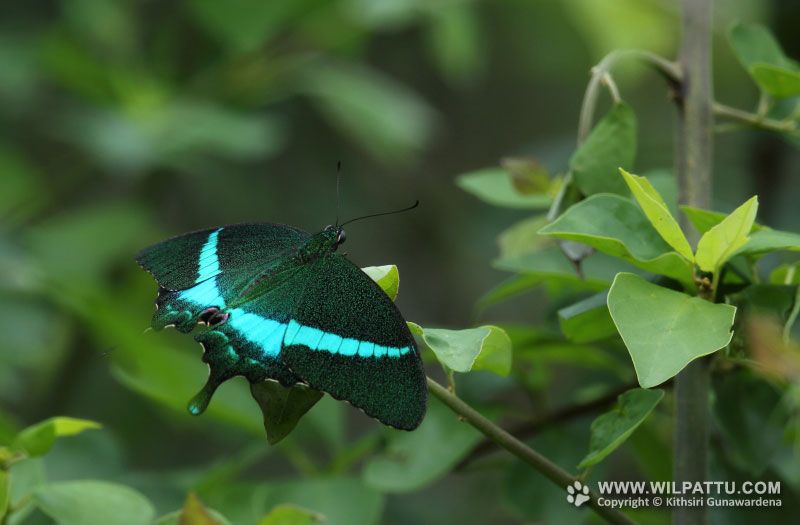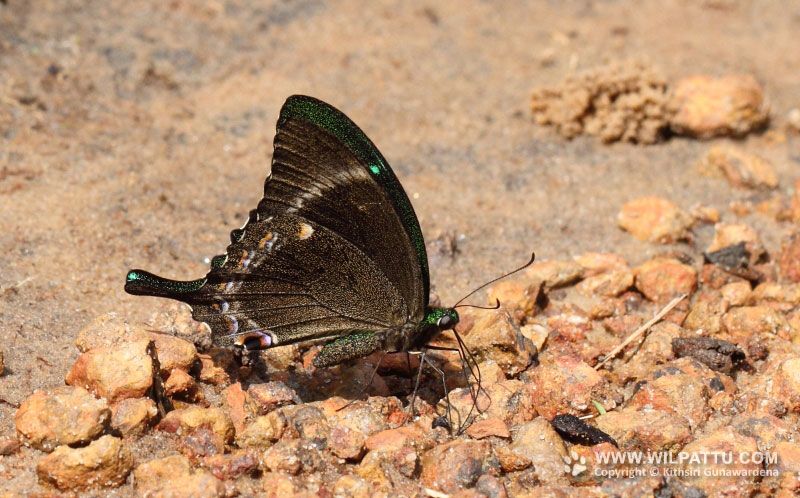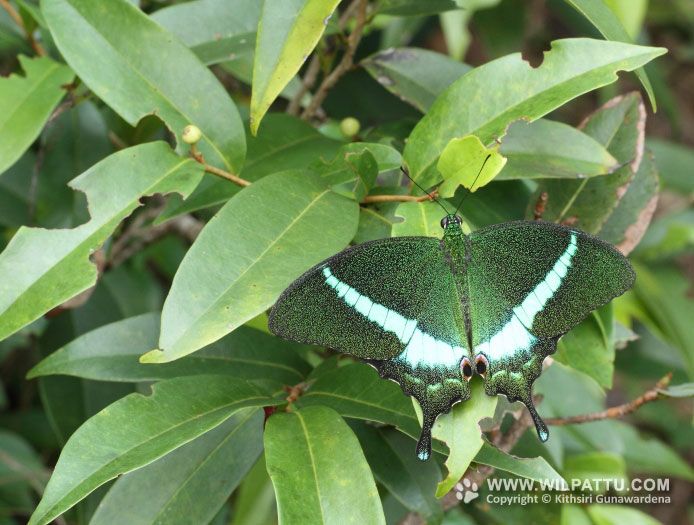
Butterflies ‹‹ Go Back
This is a large swallowtail butterfly belonging to the Papilionidae family and is found in South-Asian countries such as India and Sri Lanka.
The conservation status of this species is regarded as Vulnerable (National Red List 2012) and it is protected under the Fauna and Flora Protection Ordinance as amended by Act No. 22 of 2009.
This exquisitely beautiful butterfly can be seen flying in the dry lowlands and in the wet zone forests of the country. However, it is more common in the dry zone than in the wet zone. I have observed it in all the dry zone national parks and forested areas but found it to be most abundant in the North-Central province and the Uva region. In the wet zone it occurs in all the forested areas and I have seen it at Sinharaja Forest Reserve, Meethirigala, Morapitiya Runakanda Forest Reserve and Kitulgala Kelani Vally Forest Reserve. The highest altitude at which I have seen this butterfly is at Meemure Village in the Knuckles Forest Reserve at 1310 meters above sea level. In April 2006 I observed a few specimens at the Moratuwa University premises and one specimen in April 2007 at Rajagiriya. I have not seen this species in Mannar Island or in the Jaffna peninsula.
The female Banded Peacock lays its eggs on the tender leaves of species belonging to the Rutaceae family, which are found at Wilpattu, such as (Satin Wood trees) Burutha (S) Chloroxylon swietenia, Kudumirissa (S) Toddalia asiatica and Gon Karapinchcha Clausena indica.
I have observed this butterfly at many localities in Wilpattu including Kali Villu, Lunu Wewa, Borupan Wila, Mollikulama and Panikkar Villu. Even though it is an absolute joy to observe these fast flying butterflies in flight, with its metallic green flashing against the black underside of its wings, it is a difficult butterfly to photograph. However, on overcast days it would settle on bushes with its wings open where it could be approached for a photograph. You can also approach when its nectering on flowers. They also engage in mud sipping on wet sandy ground or moist places to feed on the nutrients. On such occasions they can be approached close enough to take a few ground level photos by lying flat on the ground.



